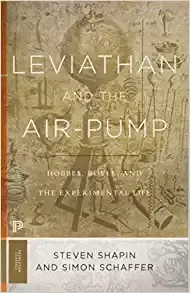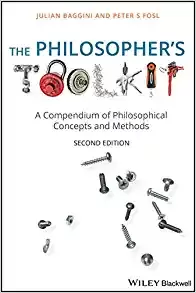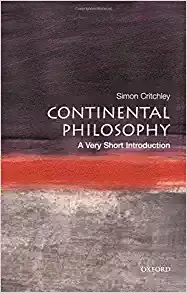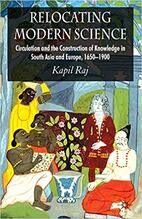HOBBES, BOYLE, AND THE EXPERIMENTAL LIFE
By Steven Shapin and Simon Schaffer
Princeton University Press, 1985, 391 pages
Review by Michael Beach
This history covers an important time in the history of scientific thought. Many scholars consider the 17th century as the ‘scientific revolution’. Many famous discoveries took place around this time. The history under review here speaks to a major debate of the time. Represented by Robert Boyle were those who believed in experimentation as the basis of knowledge production. Thomas Hobbes, on the other hand, questioned experimentation, preferring philosophical debate as the basis for coming to understanding. Boyle argued that we should believe our eyes, yet so much of experimentation is ‘managed’ that even today debate over knowledge construction versus knowledge discovery continues.
The reading claims that “many aspects of the programme that he (Boyle) recommended continue to characterize modern scientific activity and philosophies of scientific method” (p. 341). Yet the pump experiments varied in both makeup and outcome. Theories also varied from pump to pump and outcome to outcome. Did facts created by experiments explain the various theories, or did the various theories serve to explain the facts noted in the experiments? When one interprets facts, are they interpreting whether something is a fact, or are they interpreting the meaning of the fact itself?
There also seems to be an interesting power balance issue. Hobbes had a connection with the king. You’d think that would have caused his arguments to carry more weight. Yet Hobbes was not accepted into The Royal Society (a prominent British scientific association). The authors offered a long set of examples of speculation by others as to why that was. Some of the arguments surrounded Hobbes’ personality, yet Shapin and Schaffer show how some accepted members were perhaps more surly than Hobbes.
It may have come down to the fact that Boyle had members of The Royal Society act as witnesses to his air-pump experiments and even sign affidavits to the effect. At the same time Hobbes questioned the need for repeated experiments, or at times any experiments. By questioning the intellectual approach of the use of ingenuity (p. 130), which for Hobbes and his detractors was understood to be a slant, he put himself at odds with what amounted to be much of the collective thought leadership at the time. Reliance on the mechanical ‘tricks’, as he put it, was to denote something less than true philosophy.
Hobbes wrote a treatise on knowledge and science published in 1651 which he titled Leviathan. Aside from Hobbes’ negative portrait of experimentalists, most members of the Society looked at Hobbes as too dogmatic, including this publishing.
Whatever one believes to be the ultimate issue, the authors clearly state, “The rationalistic production of knowledge threatened that involved in the Royal Society’s experimentalism” (p. 139). Hobbes made an interesting assertion that many would still argue today. He depicted Boyle’s experiments as being based on his own assumptions about the nature of air. Likewise, it’s clear that Hobbes also had preconceived ideas. In fact, both Boyle and Hobbes came to what today would be thought of as false conclusions about what was happening inside the vacuum created by the pump. One could argue Boyle pre-decided the outcome of the experiments, the matters of fact, based on his ideas around the nature of air. Likewise, Hobbes essentially argued to ignore the experiments since the interpretation of the outcome was not proven, only conjectured. Yet Hobbes put more stock in his own ideas without any consideration of any matters of fact. As I see it both were socially constructing their perceptions pre- and post-experimentation.










 RSS Feed
RSS Feed